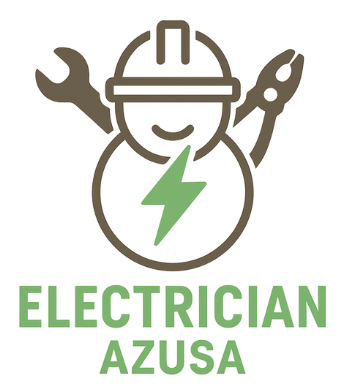When you have small children at home, even ordinary household features can become hidden dangers especially electrical outlets. To a baby or toddler, those two little slots seem fascinating and inviting to touch. Childproofing your outlets is one of the easiest and most important ways to make your home safer. With a few smart choices, you can prevent painful shocks, burns, or accidents before they happen.
Why Electrical Safety Matters
Standard outlets are designed for functionality, not child safety. A single metal object or wet hand can complete an electrical circuit and cause serious harm in a split second. The purpose of childproofing isn’t to eliminate outlets but to create multiple barriers of protection that make it nearly impossible for children to access the electrical current while keeping outlets easy for adults to use.
Practical Ways to Childproof Outlets
1) Tamper-Resistant Receptacles (TRRs)
The most effective long-term solution is the tamper-resistant receptacle. These outlets have built-in safety shutters that remain closed unless equal pressure is applied to both slots at once – something only a standard plug can do. This prevents children from inserting objects like paperclips, keys, or toys.
- Pros: Always active, no removable parts, long-lasting protection, and required by modern electrical codes in new homes.
- Cons: Must replace existing outlets; best installed by a qualified electrician.
2) Self-Closing Sliding Covers
Self-closing or sliding outlet covers are another reliable option. They replace the outlet’s faceplate with a spring-loaded cover that automatically slides closed when a plug is removed. This keeps curious fingers away immediately after use.
- Pros: Inexpensive, simple to install, and no small pieces to lose.
- Cons: Springs may loosen over time; inspect regularly to ensure full closure.
3) Box-Style Outlet Enclosures
For outlets used constantly like those behind the TV or near a Wi-Fi router – use box-style covers. These enclosures surround both the outlet and the plug, sealing them inside a latchable box.
- Pros: Prevents unplugging, tampering, or pulling cords; great for playrooms and nurseries.
- Cons: Slightly bulky appearance; choose models with smooth cord exits and secure locks.
4) Plug Inserts and Caps
Basic plug caps are the cheapest and fastest way to block outlet holes. However, toddlers can often remove them and the caps themselves can become choking hazards so they’re best for areas that kids rarely access.
- Pros: Budget-friendly, quick fix, and easy to install.
- Cons: Easily removed, unsafe if swallowed, and not ideal for everyday outlets.
Take Protection to the Next Level
Install GFCI and AFCI Outlets
GFCI (Ground-Fault Circuit Interrupter) and AFCI (Arc-Fault Circuit Interrupter) outlets provide critical electrical protection beyond physical covers. GFCIs instantly shut off when they detect moisture or ground faults, making them perfect for bathrooms, kitchens, and laundry areas. AFCIs sense dangerous arcing that could lead to electrical fires and are ideal for bedrooms and living spaces. Both should be tested monthly using their built-in “TEST” and “RESET” buttons.
Manage Cords and Furniture Placement
- Hide cords: Use cord channels or covers to keep wires neat and out of sight.
- Rearrange furniture: Place heavy furniture in front of unused outlets, but never press cords underneath legs or rugs.
- Avoid overloading: Don’t connect multiple power strips; use one surge-protected strip if necessary.
Room-by-Room Safety Plan
Nursery & Play Areas
- Use TRRs or sliding covers on every reachable outlet.
- Box covers work well for baby monitors, night lights, or white noise machines.
- Keep cords out of sight, either behind furniture or inside cord sleeves.
Kitchen, Bathroom & Laundry
- Ensure every outlet near water sources is a GFCI and test monthly.
- Unplug small appliances after use and store cords safely.
- Never use extension cords near sinks, tubs, or wet floors.
Living Room & Bedrooms
- Install TRRs or sliding plates on all wall outlets.
- Use locking covers for surge protectors and entertainment centers.
- Route cords neatly along walls using low-profile channels to prevent trips and tugs.
Installation & Maintenance Tips
- Turn off the power: Always shut off the breaker before changing outlets or plates.
- Follow directions: Install covers according to manufacturer instructions for maximum protection.
- Buy certified products: Look for UL or ETL safety labels.
- Inspect monthly: Check that sliding covers work smoothly and outlets stay cool to the touch.
- Replace damaged components: If outlets are cracked, discolored, or loose, contact an electrician immediately.
What Not to Do
- Rely solely on plug caps: They’re too easy for kids to remove.
- Leave cords dangling: Short cords tempt children to pull or chew on them.
- Ignore damaged strips or cords: Replace them before they spark or overheat.
- Cover outlets with fabric: Avoid blocking outlets with curtains, rugs, or blankets.
Renters vs. Homeowners
Renters: Use removable solutions like sliding covers or plug boxes and request permission for outlet upgrades. Homeowners: Plan for a full-home upgrade – install TRRs throughout, add GFCI/AFCI outlets, and standardize safety covers for a clean and consistent look.
When to Call an Electrician
- Your home has old or aluminum wiring.
- Outlets feel warm, buzz, or show scorch marks.
- Breakers trip frequently or lights flicker unexpectedly.
- You’re installing TRRs or upgrading to GFCI/AFCI outlets.
Final Childproofing Checklist
- All reachable outlets protected with TRRs or sliding covers.
- Box covers installed for always-on devices.
- Cords hidden and secured.
- GFCI and AFCI protection verified in key areas.
- Monthly inspection routine established.
Childproofing your electrical outlets is a simple yet powerful way to protect your family from preventable injuries. It’s not just about installing covers – it’s about developing safe habits and maintaining your system over time. By combining hardware solutions like TRRs, GFCI outlets, and cord management with careful supervision, you create a safer environment where your children can explore freely while staying out of harm’s way.

